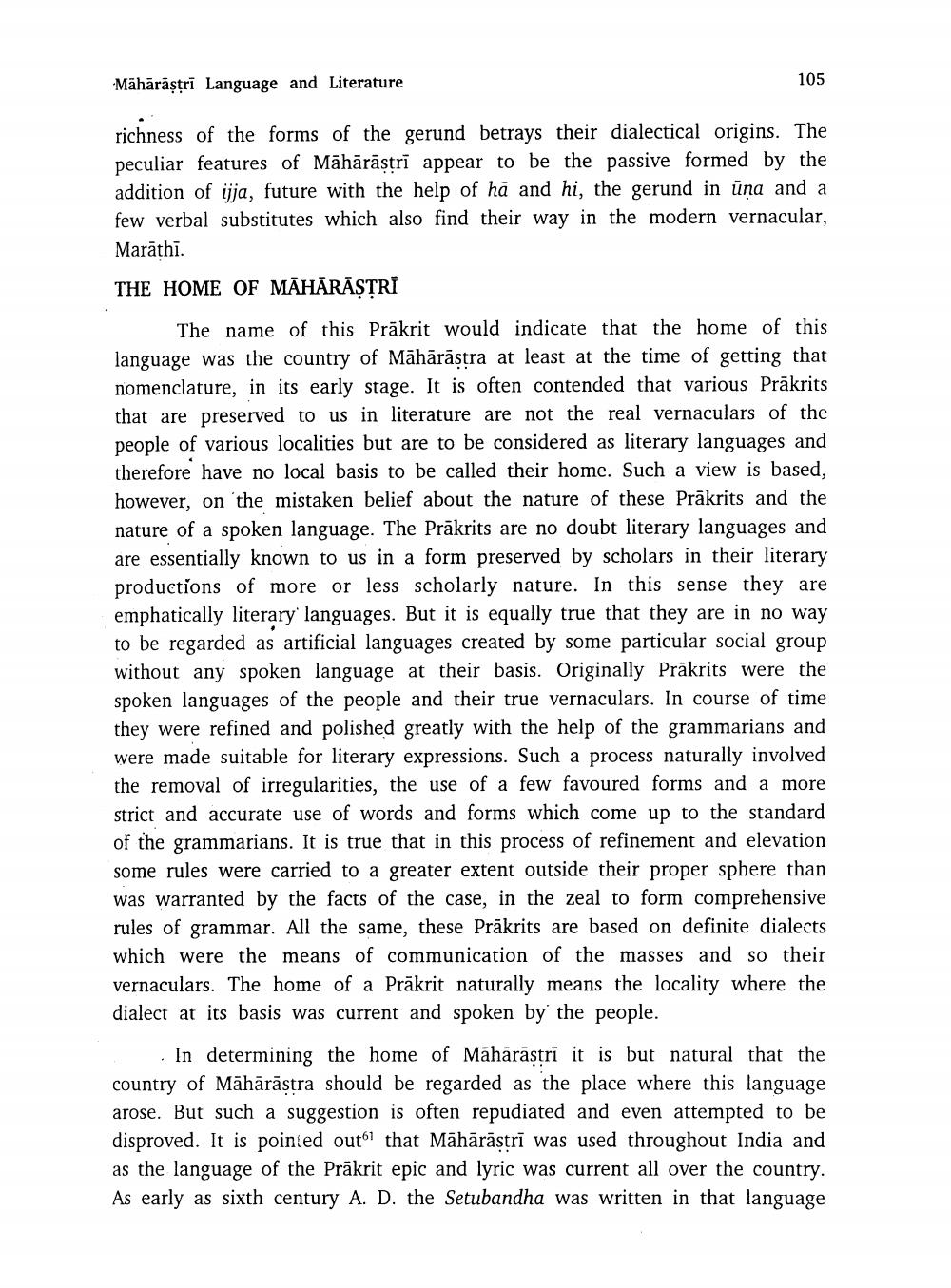________________
Māhārāștri Language and Literature
105
richness of the forms of the gerund betrays their dialectical origins. The peculiar features of Māhārāştri appear to be the passive formed by the addition of ijja, future with the help of hã and hi, the gerund in üna and a few verbal substitutes which also find their way in the modern vernacular, Marāthī.
THE HOME OF MĀHĀRĀSTRĪ
The name of this Prākrit would indicate that the home of this language was the country of Māhārāstra at least at the time of getting that nomenclature, in its early stage. It is often contended that various Prākrits that are preserved to us in literature are not the real vernaculars of the people of various localities but are to be considered as literary languages and therefore have no local basis to be called their home. Such a view is based, however, on the mistaken belief about the nature of these Prākrits and the nature of a spoken language. The Prākrits are no doubt literary languages and are essentially known to us in a form preserved by scholars in their literary productions of more or less scholarly nature. In this sense they are emphatically literary languages. But it is equally true that they are in no way to be regarded as artificial languages created by some particular social group without any spoken language at their basis. Originally Prākrits were the spoken languages of the people and their true vernaculars. In course of time they were refined and polished greatly with the help of the grammarians and were made suitable for literary expressions. Such a process naturally involved the removal of irregularities, the use of a few favoured forms and a more strict and accurate use of words and forms which come up to the standard of the grammarians. It is true that in this process of refinement and elevation some rules were carried to a greater extent outside their proper sphere than was warranted by the facts of the case, in the zeal to form comprehensive rules of grammar. All the same, these Prākrits are based on definite dialects which were the means of communication of the masses and so their vernaculars. The home of a Prākrit naturally means the locality where the dialect at its basis was current and spoken by the people.
In determining the home of Māhārāstri it is but natural that the country of Māhārāstra should be regarded as the place where this language arose. But such a suggestion is often repudiated and even attempted to be disproved. It is pointed out that Māhārāstrī was used throughout India and as the language of the Prākrit epic and lyric was current all over the country. As early as sixth century A. D. the Setubandha was written in that language




